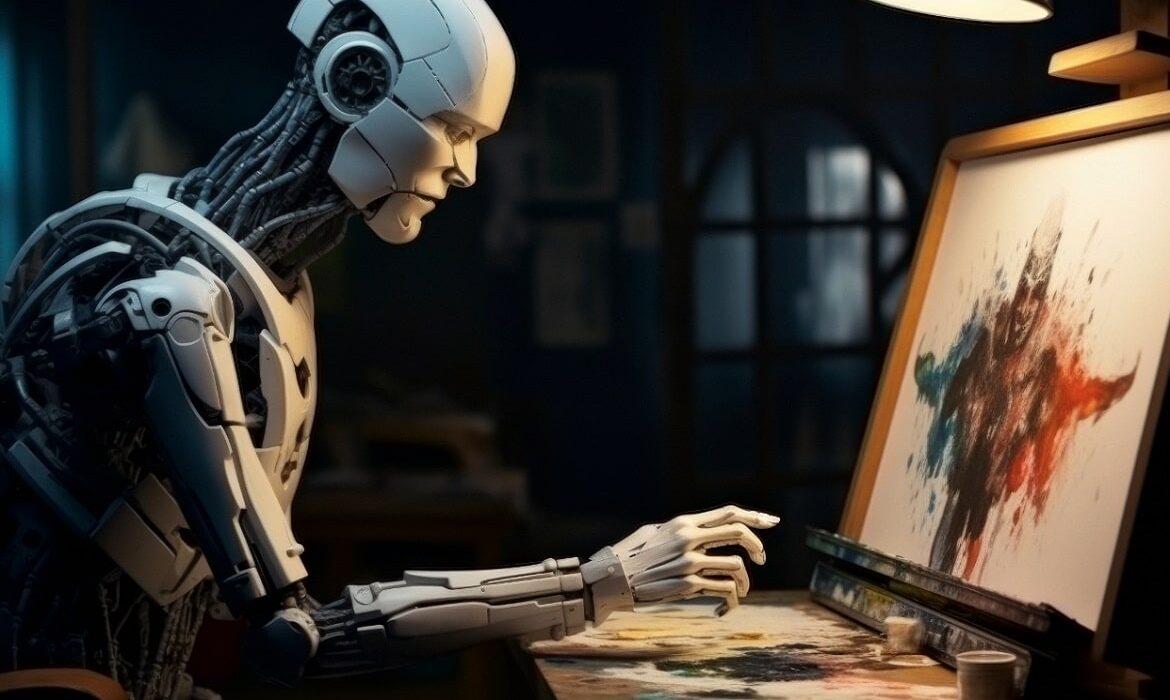AI in Graphic Design Software: What Tools Will Dominate the Industry?
The transformation in the artistic landscape of graphic design is immense due to the advancement of AI in Graphic Design Software. With AI changing the rules of engagement for the designers, from image enhancement to design recommendations, graphic designers are feeling the engagement less and less. AI tools for graphic design are proven to be a serious game-changer for organisations aiming at the productivity-creativity enhancement balance. Designers are moving away from the time-tested AI in Graphic Design Software and actively using AI software applications to generate creative ideas and suggest layouts while automating monotonous tasks. In the AI-powered future of graphic design software, it is very crucial to find out the tools that are going to rule the industry and the impact they will have on the creative process.
Also Read:
The Evolution of AI in Graphic Design Software
The integration of Artificial intelligence in graphic design is not celebrated as a novelty, but the capabilities of AI have advanced tremendously in the last ten years. The first applications of AI were limited to filters and simple design tips. Today’s AI-powered design software analyzes user choices and predicts trends while developing artwork from scratch using machine learning in design software.
These AI tools for graphic design significantly impact the way work is done because they speed up a design workflow and provide infinite creativity. Tasks such as cropping, background removal, color matching, and typography that used to be painstakingly done manually can now be performed by AI in Graphic Design Software. Therefore, since designers are beginning to embrace these smart tools, the future of graphic design software is increasingly forecasted toward an increasingly AI-enhanced human creative process and less toward the replacement of that creativity.
Top AI Tools Dominating the Graphic Design Industry
There is a quickly expanding AI landscape in graphic design software, coupled with fierce competition between different options. Some of the most influential ones include:
- Adobe Sensei: Adobe’s AI-powered design software, Adobe Sensei, integrates into applications such as Photoshop, Illustrator, and InDesign, using artificial intelligence to enhance design workflows. Some functions include intelligent image cropping, automatic tagging, font matching, and content-aware editing. With the deep learning power of Adobe Sensei, designers can work faster while keeping creative control.
- Canva’s Magic Design: Canva’s AI in Graphic Design Software includes Magic Design in the Canva design suite. It customizes layouts and font combinations provided by the user, thus simplifying the overall design process for both novice and professional designers.
- Figma AI Plugins: Figma has embraced AI-driven design platforms by introducing plugins powered by artificial intelligence that automatically perform design suggestions, generate content, and manage design systems. These tools enhance the pace of prototyping while ensuring that the design remains consistent across projects.
- Runway ML: Runway ML is changing the way designers integrate machine learning in design software. The software has creative AI tools for video editing, image generation, and real-time design collaboration.
- Designify: Focusing on background removal and image enhancement, Designify AI in Graphic Design Software automate the essential but tedious editing tasks to let designers focus on being creative.
Key Features That Will Drive AI Dominance
In establishing the stronghold of the future AI graphic design software, the most important capabilities in the success of the software need to be specifically analyzed:
- Travel Automation in Repeated Processes: Background removal, resizing and improving images would become instant tasks.
- Forecasting Pattern Proposals in design: From analyzing user preferences, an AI tool for graphic design will suggest colors, fonts, and layout patterns.
- Content Generation: Text-to-image generation bridges the gap between imagination and real image production, as DALL·E demonstrates with customer requests for text-based images.
- Shared design systems: The future of graphic design software will be focused on seamless and real-time co-creation of designers using AI-driven design platforms.
- Personalized user experiences: AI will track user behavior across projects for personalized design recommendations and asset libraries.
Therefore, AI-powered design software will be a critical enabler of production cycles since it would allow rapid production without compromising quality.
The Effects of AI on Graphic Design Careers
AI in graphic design can ramp up efficiency. But do design careers have a future? Simply put, ‘no’, at least when considered in the more traditional sense. Rather, AI graphic design software acts in a collaborative, rather than a replacement capacity, for fostering human creativity.
This means taking over all repetitive and technical tasks so that the designers can now put full energy into the strategy and creativity behind their work. Designers have to build up their skills to learn how to work with AI tools for graphic design so that they can maximize their results. This would include prompt engineering, curating AI-generated assets, and ensuring cohesive brand storytelling, among other responsibilities.
Coming down the line in future graphic design software, designers will be highly prized for their ability to mix their creativity with the AI-powered design software so that the end product feels human and resonates emotionally — something AI alone cannot truly do.
The Future of AI in Graphic Design Software
The innovations in AI will long be the determining factor in shaping the future of graphic design software, which keeps changing. The AI-driven design platforms will be more user-friendly, understanding even minute differences in different creative styles through deep learning. The designer will always receive a personalized touch, with software now able to predict design needs even before the input of the user.
AI in Graphic Design Software into speculative areas such as augmented reality design, voice-controlled interfaces, and generative design processes. As AI tools for graphic design continue to evolve, they will be the creative companions that designers can truly trust. They will allow designers to convert ideas into reality faster and more accurately than ever.
Conclusion
The unique creative space facilitated by AI is proliferating the development of AI in graphic design software that supports the creative process, productivity, and collaboration. Those companies and designers like Shag Infotech who, in turn, accept AI-based design software will work hand in hand where innovation and imagination bloom.






